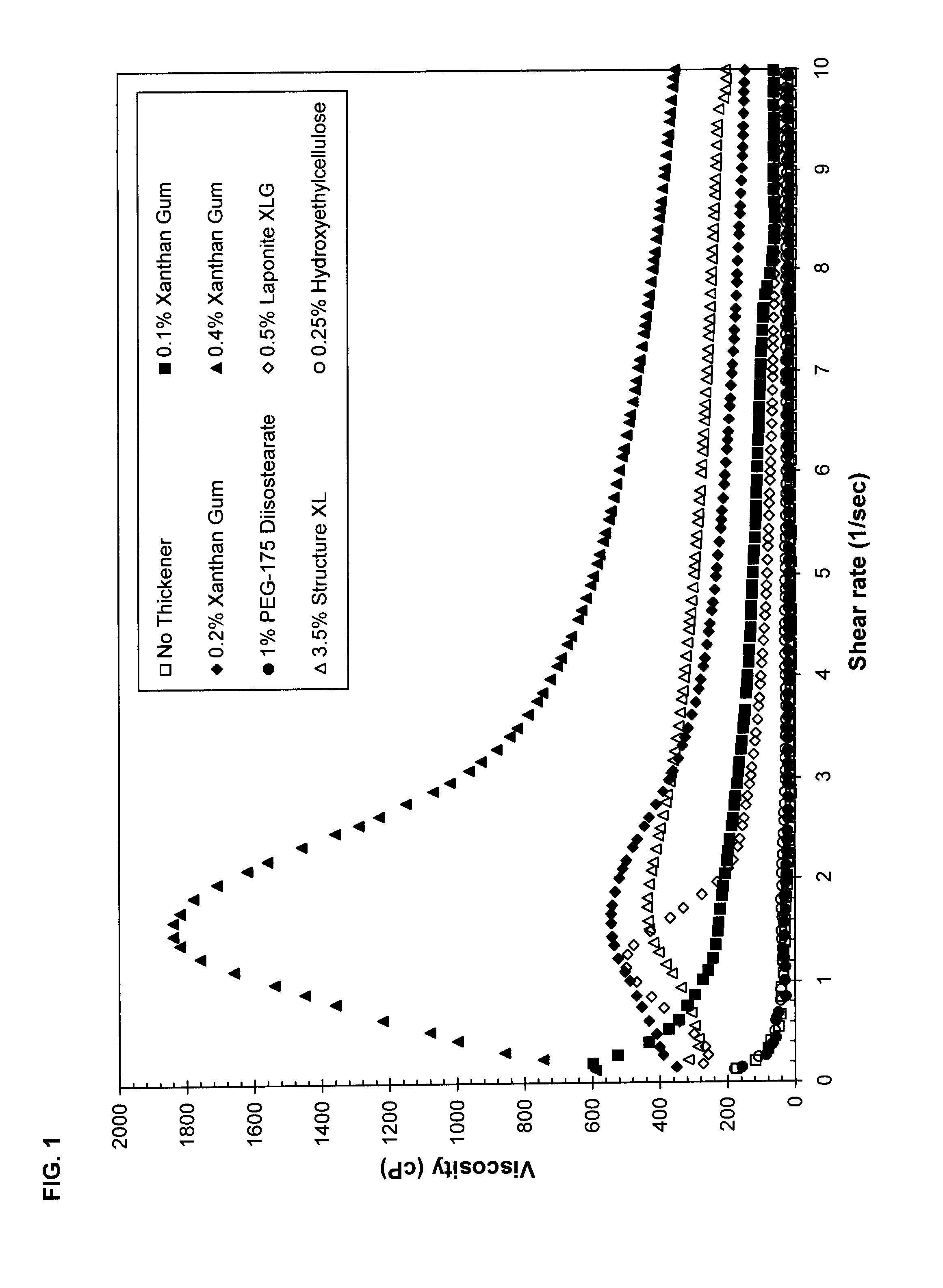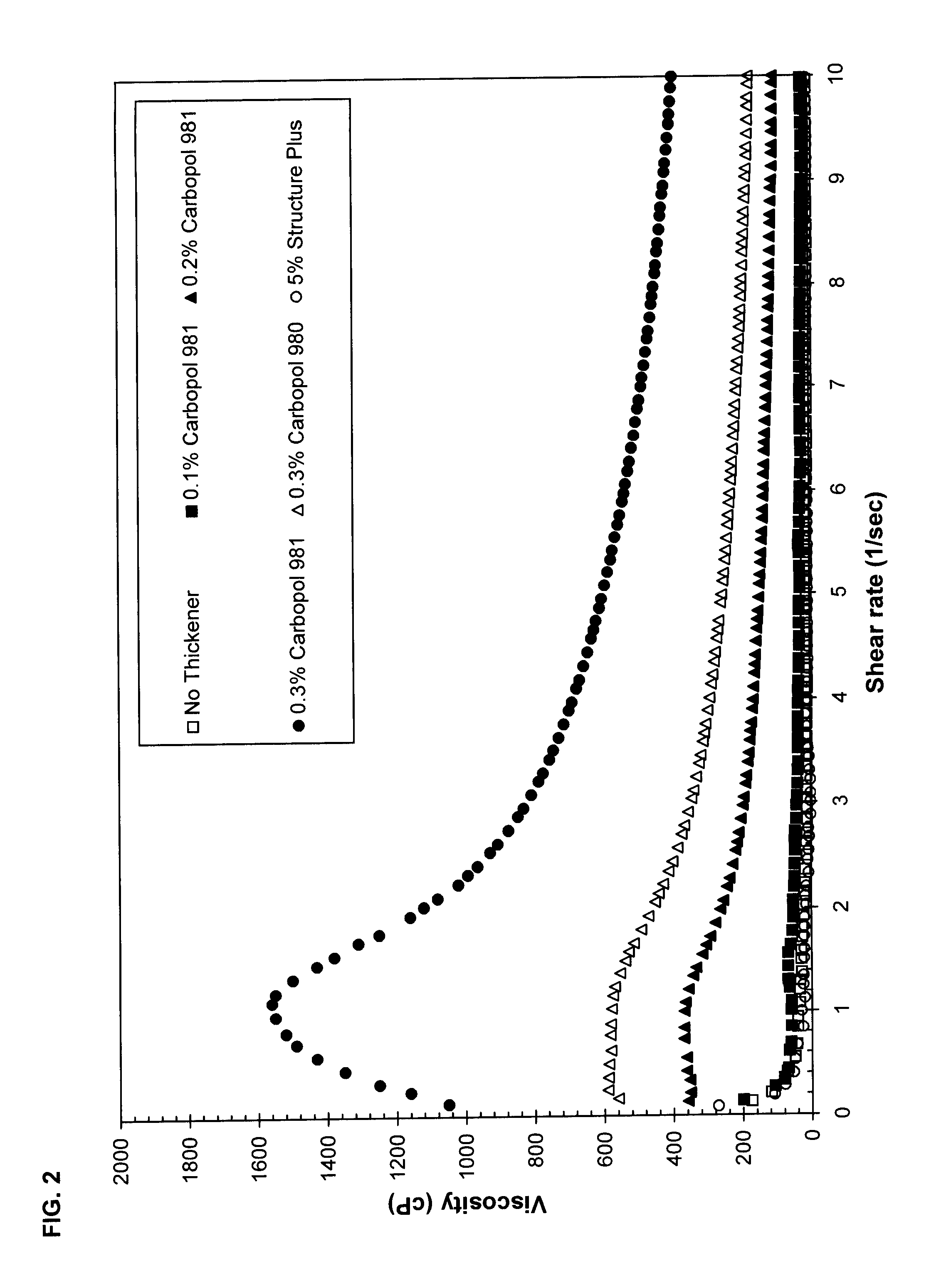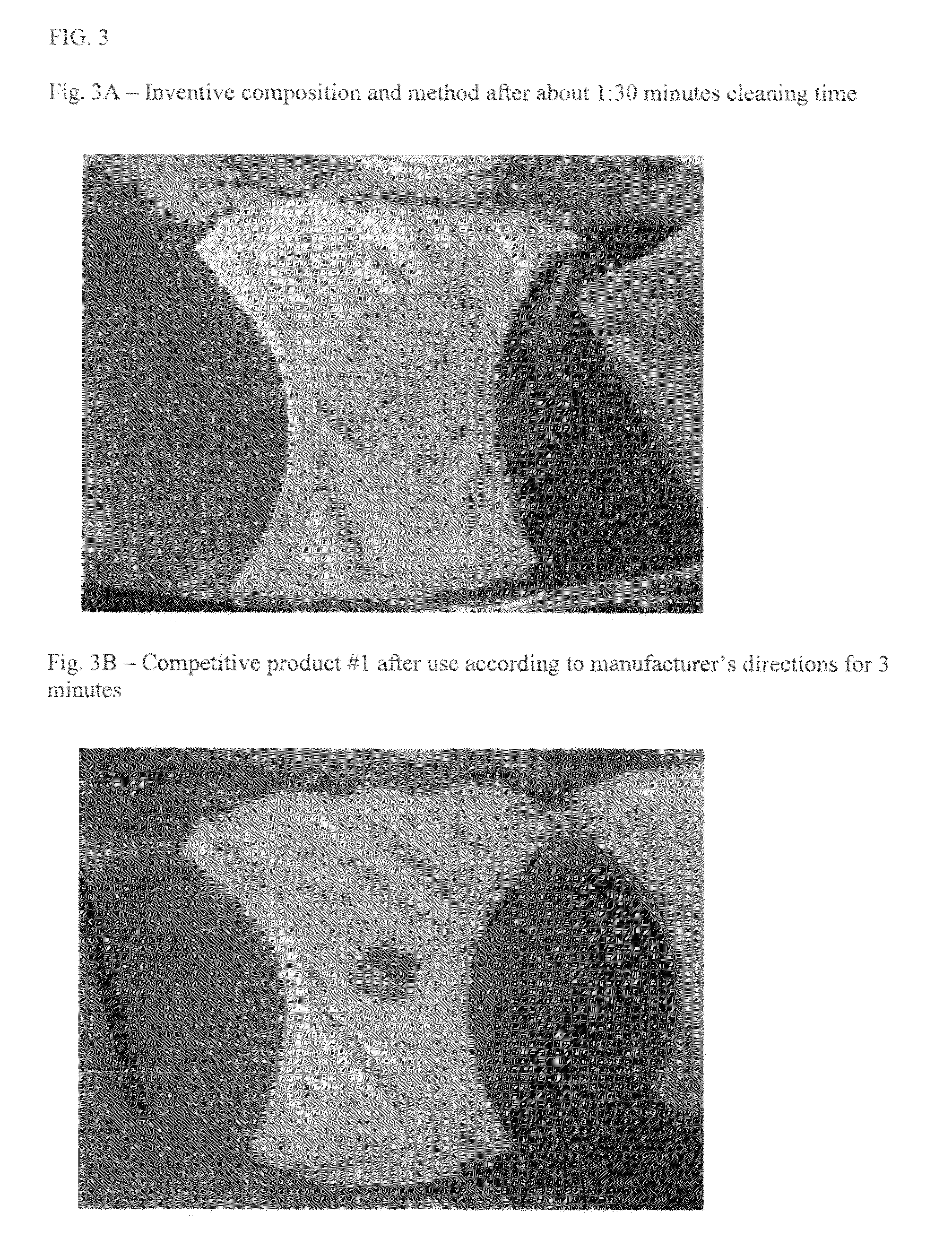Stain-discharging and removing system
a technology of stain removal and stain storage, which is applied in the field of stain removal reaction mechanism and cleaning kit, can solve the problems of unfavorable portable, or outside the home, use, and unsuitable for use in various consumer products, and achieves the effect of convenient dispensing
- Summary
- Abstract
- Description
- Claims
- Application Information
AI Technical Summary
Benefits of technology
Problems solved by technology
Method used
Image
Examples
Embodiment Construction
Section I.—Definitions
[0014]As used herein the term “nonwoven web” refers generally to a web having a structure of individual fibers or threads which are interlaid, but not in an identifiable manner as in a knitted fabric. Examples of suitable nonwoven webs include, but are not limited to, meltblown webs, spunbond webs, carded webs, airlaid webs, etc. The basis weight of the nonwoven web may vary, such as from about 10 grams per square meter (gsm) to about 200 gsm, in some embodiments from about 15 gsm to about 170 or 180 gsm, and in some embodiments, from about 15 gsm to about 125 or 135 gsm.
[0015]As used herein, the term “meltblown web” generally refers to a nonwoven web that is formed by a process in which a molten thermoplastic material is extruded through a plurality of fine, usually circular, die capillaries as molten fibers into converging high velocity gas (e.g. air) streams that attenuate the fibers of molten thermoplastic material to reduce their diameter, which may be to ...
PUM
 Login to View More
Login to View More Abstract
Description
Claims
Application Information
 Login to View More
Login to View More - R&D
- Intellectual Property
- Life Sciences
- Materials
- Tech Scout
- Unparalleled Data Quality
- Higher Quality Content
- 60% Fewer Hallucinations
Browse by: Latest US Patents, China's latest patents, Technical Efficacy Thesaurus, Application Domain, Technology Topic, Popular Technical Reports.
© 2025 PatSnap. All rights reserved.Legal|Privacy policy|Modern Slavery Act Transparency Statement|Sitemap|About US| Contact US: help@patsnap.com



